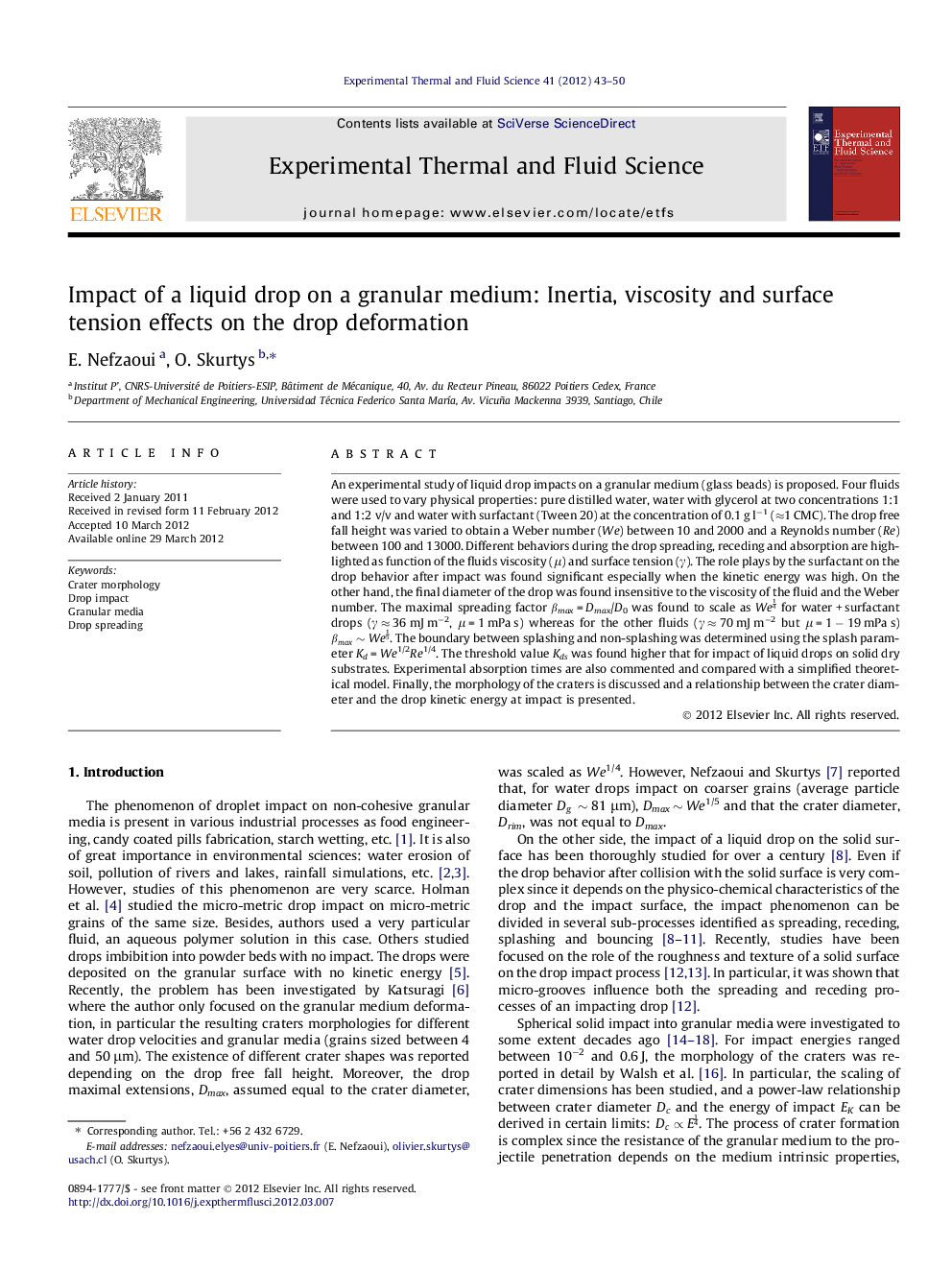| Article ID | Journal | Published Year | Pages | File Type |
|---|---|---|---|---|
| 652101 | Experimental Thermal and Fluid Science | 2012 | 8 Pages |
Abstract
An experimental study of liquid drop impacts on a granular medium (glass beads) is proposed. Four fluids were used to vary physical properties: pure distilled water, water with glycerol at two concentrations 1:1 and 1:2 v/v and water with surfactant (Tween 20) at the concentration of 0.1 g lâ1 (â1 CMC). The drop free fall height was varied to obtain a Weber number (We) between 10 and 2000 and a Reynolds number (Re) between 100 and 13000. Different behaviors during the drop spreading, receding and absorption are highlighted as function of the fluids viscosity (μ) and surface tension (γ). The role plays by the surfactant on the drop behavior after impact was found significant especially when the kinetic energy was high. On the other hand, the final diameter of the drop was found insensitive to the viscosity of the fluid and the Weber number. The maximal spreading factor βmax = Dmax/D0 was found to scale as We14 for water + surfactant drops (γ â 36 mJ mâ2, μ = 1 mPa s) whereas for the other fluids (γ â 70 mJ mâ2 but μ = 1 â 19 mPa s) βmaxâ¼We15. The boundary between splashing and non-splashing was determined using the splash parameter Kd = We1/2Re1/4. The threshold value Kds was found higher that for impact of liquid drops on solid dry substrates. Experimental absorption times are also commented and compared with a simplified theoretical model. Finally, the morphology of the craters is discussed and a relationship between the crater diameter and the drop kinetic energy at impact is presented.
Related Topics
Physical Sciences and Engineering
Chemical Engineering
Fluid Flow and Transfer Processes
Authors
E. Nefzaoui, O. Skurtys,
